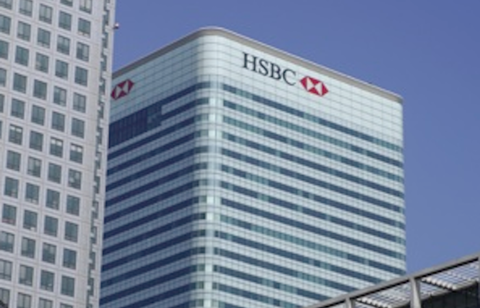
Banking and financial organisation HSBC Bank has reported a 59% mean gender pay gap for fixed hourly pay across 23,507 employees for 2017.
The organisation has reported its gender pay gap data across seven legal entities in line with the government’s gender pay gap reporting regulations and ahead of the private sector submission deadline of 4 April 2018. The UK entities the organisation has reported on are HSBC Bank, HSBC Group Management Services, HSBC Global Services UK, HSBC Global Asset Management UK, HSBC Private Bank UK, Marks and Spencer Financial Services and HSBC Asia Holdings. HSBC Bank is the largest employing entity in the UK.
The gender pay gap reporting regulations require organisations with 250 or more employees to publish the difference between both the mean and median hourly rate of pay for male and female full-time employees; the difference between both the mean bonus pay and median bonus pay for male and female employees; the proportions of male and female employees who were awarded bonus pay; and the proportions of male and female full-time employees in the lower, lower middle, upper middle and upper quartile pay bands.
HSBC Bank’s median gender pay gap for fixed hourly pay for 2017 is 29%.
Its mean gender pay gap for bonuses paid in 2017 is 86%, and the median gender pay gap for bonus payments is 61%. Over this period, 85% of female employees received a bonus payment compared to 84% of male employees.
More than a third (34%) of employees in the highest pay quartile at HSBC Bank are female, compared to 64% in the second quartile, 73% in the third quartile and 71% in the lowest pay quartile. In total, HSBC’s UK workforce comprises of 54% female employees and 46% male employees.
In addition, HSBC has projected its gender pay gap data for 2018 using snapshot data as at 1 February 2018.
For 2018, HSBC Bank has a projected mean gender pay gap of 60% as at 1 February 2018, and a median gender pay gap of 29%. Its projected mean gender pay gap for bonus payments to date is 84%, and the median is 57%. This relates to 87% of female employees and 88% of male employees who have received a bonus this year.
HSBC has attributed its gender pay gap firstly to the fact that there are fewer women in senior leadership positions attaining the associated higher levels of pay. Currently, 23% of the organisation’s UK senior leaders are women and at a group level, 29.4% of the members on HSBC’s board are women. The organisation’s analysis also shows that the number of women occupying global senior leadership roles has increased over the past five years and is 26.8% at the end of 2017.
Secondly, HSBC’s analysis shows a further gender imbalance in junior roles, which tends to attract lower pay. More than two-thirds (67%) of the organisation’s junior roles in the UK are fulfilled by women. Lastly, HSBC believes its gender pay data is also influenced by the fact that there is a higher proportion of female employees working part-time hours and earning bonuses on a pro rata basis.
In addition, HSBC states that the UK being the group’s head office has also impacted its gender pay data because the majority of the organisation’s senior global roles are therefore based in the UK. The diversity of HSBC’s banking portfolio, for example to include investment and retail banking, is also reported as affecting the organisation’s final data.
To address its gender pay gap, HSBC has joined the 30% Club to aim to have 30% of its senior leadership roles filled by women by 2020. It is also including inclusive leadership objectives for UK people managers, requesting gender diverse shortlists for all external senior leadership positions and implementing an inclusive hiring essentials course for all hiring managers. This will be available in 2018.
The organisation will also continue to have a gender-balanced graduate intake, ensure a balanced representation in talent development programmes, create partnerships with external organisations and expand opportunities for women in the global banking and markets division to access sponsorship and mentoring support. This will include programmes targeted at director level.
In addition, parental leave coaching is available for all parents and their managers in the UK, shared parental leave and sabbatical policies are promoted across the business and a new flex employee network has been launched. HSBC is also looking at ways to enhance its flexible working proposition. The organisation’s gender pay gap will also be tackled through its Balance network and by creating pay transparency and consistency, in particular for junior employees.
Elaine Arden, group head of human resources at HSBC, said: “We believe that a sustainable and successful business relies on a diverse and inclusive workforce that reflects the customers it serves and the communities in which it operates. Gender balance is crucial to this.
“Our pay strategy is designed to attract and motivate the very best people, regardless of gender, ethnicity, age, disability or any other factor unrelated to performance or experience.
“Improving the gender balance across businesses and levels of seniority is a priority and something to which the group management board is committed. We are making progress. Improving our gender balance will take time and require sustained focus over the long-term.”











